#dneiper
Explore tagged Tumblr posts
Text
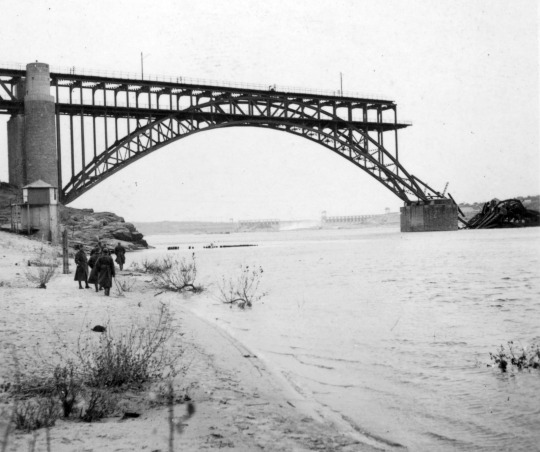
Wrecked bridge over the Dneiper, Zaporizhzhia (then Zaporozhye), 1941. From the Budapest Municipal Photography Company archive.
17 notes
·
View notes
Text
18,000 years ago there were people building a life out of mammoth bones in the Dneiper Valley
The world has changed so much since then.
Like the land itself- something we think of as unchanging in our short lives- has changed. There are seas younger than these cultures.
I will never know a mammoth
But those people 18,000 years ago were literally exactly the same as me. Same needs for sleep, warmth, food. They had families and made art.
If I think about it too hard I get filled with such specific emptiness that turns into a spinning sort of panic.
#personal#nothing new under the sun#the inherent emptiness of being!#really comforts and freaks me out
1 note
·
View note
Text
Ancient Shiva Linga in Ireland

In County Meath, Ireland, on the Hill of Tara sits a mysterious stone known as the Lia Fáil (Stone of Destiny). According to The Annals of the Four Masters, an ancient document written by Franciscan Monks between 1632-1636 AD, this stone was brought to Ireland by the Tuatha Dé Danann, a supernaturally gifted people. Some speculate it was they who brought the power to make bronze to Ireland. They were the main deities of pre-Christian Gaelic Ireland.
The Tuatha Dé Danann, meaning the children of the goddess Danu, are said to have ruled Ireland from 1897 B.C. to 1700 B.C. having arrived from the coast on ships. The Christian monks viewed the stone as a pagan stone idol symbolic of fertility. This stone was so important that it was used for the coronation of all Irish Kings up until 500 AD.
The goddess Danu in European tradition was a river goddess. We find her namesake in rivers such as the Danube, Don, Dneiper, & Dniestr rivers. In some Irish texts her father is said to be Dagda (the good god), a father figure in Irish tradition.
The Vedic tradition also has a goddess Danu, the daughter of Daksha, wife of Kasyapa Muni, who was a goddess of the rivers. The word Danu in Sanskrit means ‘flowing water’. As the daughter of Daksha, her sister Sati would have been married to Lord Shiva. Finally, Tara, meaning ‘star’ in Sanskrit, is another name for the wife of Lord Shiva. To practitioners of Vedic tradition the Lia Fáil matches very closely to the Shiva Linga.
Eventually the Tuatha Dé Danann were defeated in battle. According to legend, they were allowed to stay in Ireland only under the ground as the ‘Aes sidhe’ – people of the fairy mounds.
In recent years the sacred stone has been subject to desecration. In June 2012 a vandal struck the stone 11 times. You can watch a newscast on this act of vandalism:
youtube
Again, in May 2014 vandals poured red and green paint over its surface. These actions are most unfortunate. We would encourage those in Ireland to protect and visit this ancient stone – a link to Ireland’s Vedic past.

From:
Bhaktivedanta Ashram
0 notes
Text
DOORS’ Scientists respond to the Kakhovka Dam collapse
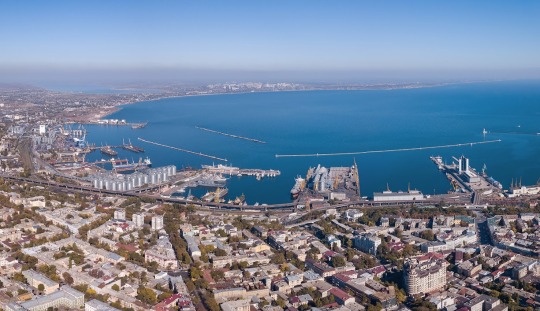
Image: Odessa Port on the Black Sea, receives water from the Dnieper river delta.
The blowing up of the Nova Kakhovka Dam in southern Ukraine on June 6 has resulted in a devastating flood, impacting numerous communities. DOORS’ Scientists, using the monitoring tools at our disposal have already begun to analyse the impacts on the Black Sea. Many thanks to Prof. Andrew Tyler from USTIR and Prof. Nikolai Berlinsky of OSENU for contributing to this article.
The Black Sea is one of Europe’s most challenged ecosystems. Large rivers such as the Danube, Dniester and Dnieper provide a direct connection between society’s activities and the marine environment. Population and land use intensification, deforestation, overfishing and an ever increasingly complex cocktail of pollutants have directly impacted the Black Sea ecosystem. Nutrients from the land drove intense blooms of algae in the western shelf that ultimately led to oxygen depletion at depth. This oxygen depletion has a significant effect on the biodiversity of marine life, especially filter feeders such as molluscs that would normally consume the algae. These periods of oxygen depletion result in more nutrients being released into the water column thereby perpetuating the intensity of algal blooms. Following the collapse of communism in the 1990s, the flux of pollutants dramatically declined from Danube, Dniester and Dnieper and the Black Sea. Since then, the ecosystem has been in a fragile state of recovery and threatened further by climate change, marine litter and microplastics.
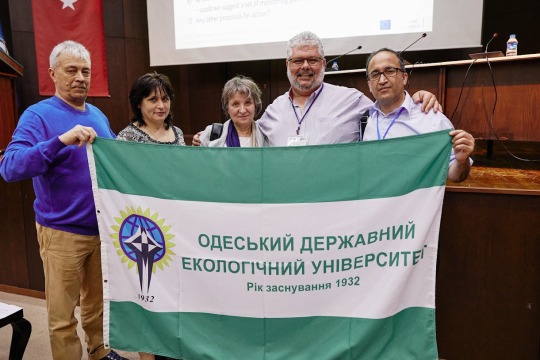
Image: Many of our Ukranian friends and colleagues joined us in Trabzon for our General Assembly, June 2023. © DOORS Black Sea
The blowing up of the Kakhovskaia hydroelectric power station and dam resulted in the flooding of an area in excess of 600 km2 as shown from satellite imagery. This liberated pollutants and detritus that would otherwise have been protected from entering the Dneiper River. Professor Yurii Tuchkovenko from Odessa State Environmental University (OSENU) highlights that fuel, lubricants, chemicals (including pesticides), wastewater, heavy metal compounds, and the remains of dead animals were washed into the Black Sea. Furthermore, given the ongoing war, there is a risk that mines and munitions will also have been flushed into the coastal environment.

Image: Kakhovka Dam Flood - Situation as of 09/06/2023 3:36pm (UTC) Imagery from Sentinel-1. Produced by Dr Cristian Silva Perez © Scotland’s international Environment Centre, University of Stirling
It is estimated that the immediate area impacted in the Black Sea was around 620 km2 on 6th June, 1250 km2 on the 9th June and 1710 km2 on the 10th June. The salinity of this part of the Black Sea is 3 times lower than expected, while suspended matter has increased 15-fold, and oil pollution is 6 times expected levels. The beaches have also been filled with waste and other debris.

Image: Kerson Flooding, Imagery from Sentinel-1. Produced by Dr Cristian Silva Perez © Scotland’s international Environment Centre, University of Stirling
According to the information from the Odessa Regional Center for Control and Prevention of Diseases of the Ministry of Health of Ukraine, cholera-like viruses and a positive astrovirus RNA was found in the seawater samples taken on June 14, 2023. Based on the information of the Sovereign Ecological Inspectorate of the Pvdenno-Zakhidny District (Mykolaiv and Odeska Oblasts), the translocation of suspended rivers was recorded 5 times. In seawater samples taken on “Lanzheron” beach, an excess of suspended solids has increased 5-fold and the salinity is lower than the norm by 2.9 times. Citizens of Odessa have been advised not to visit the beaches or swim in the Black Sea.

Image: Citizens of Odessa have been advised not to visit the beaches or swim in the Black Sea © OSENU.
In the hours after the collapse, an adviser to the Ukrainian president, Volodymyr Zelenskiy, said “a global ecological disaster” was playing out. On 8 June Zelenskiy himself said that 50,000 hectares of forest had been flooded, and that 20,000 animals and 10,000 birds were “under threat of imminent death”.
Such an event presents a shock to the environment and extensive monitoring is required to not only assess the full extent of the damage, but importantly, to begin determining solutions to mitigate these impacts on an already fragile ecosystem.
0 notes
Text
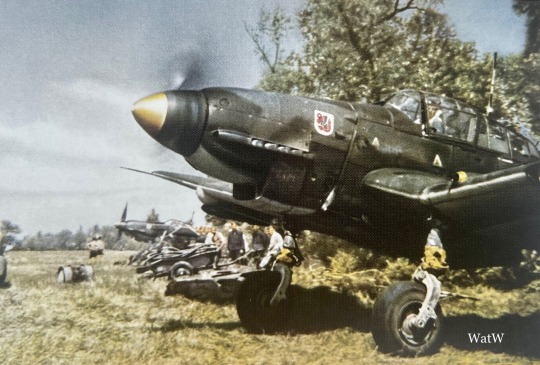
A German Ju 87D of III./St.G17. Staffel is about to take off from the Dnieper border region - Eastern Front, Summer 1942. Note the wheel casings have been removed to avoid the plane flipping over on poor surfaces during landing / take off
#world war two#1940s#worldwar2photos#history#ww2#wwii#ww2 history#wwii era#world war 2#ww2history#luftwaffe#dneiper#eastern front#1942#stuka#ju87#aviation#world war2#ww2colourphotos#soviet union
142 notes
·
View notes
Photo
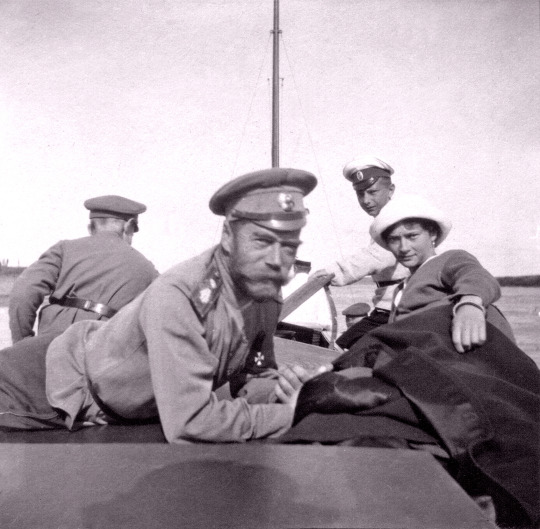

44 notes
·
View notes
Text
"Yeah, we gay, keep walking"
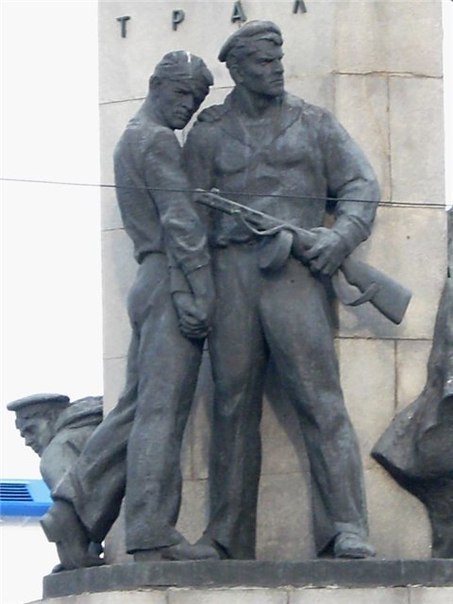
[Image description Photo of a statue of two men standing and holding hands while looking defiant. One of them is holding a rifle in his left hand and is holding the second man's hand, the second man also has a hand on the first man's shoulder.]
#image described#image description added#described images#Dneiper flotilla#kyiv ukraine#Soviet monuments#homoerotic#homoerotic art#geekysteven
137 notes
·
View notes
Text
Ukraine is cutting off all the supply lines to Crimea. Soon the Russian forces in Crimea will begin to starve. They are already so ill-equipped that they cannot dislodge the Ukrainian marines from their bridgehead on the Dneiper. Ukraine now has free use of the Black Sea shipping lanes to export their grain while Russia no longer can.
Ukraine’s daring attack on a major Russian warship in occupied Crimea in the small hours of Dec. 26 was one more episode in Kyiv’s strategy to deny Russia control over the Black Sea. With most of its ships driven out of its home port in Sevastopol, the Russian Black Sea Fleet can no longer find safe haven anywhere along the Crimean Peninsula. All ports there are now vulnerable to attack.
The Institute for the Study of War tells the story with data, showing that Sevastopol saw a steady decline in the number of Russian naval vessels in port between June and December 2023; by contrast, Novorossiysk on the Russian mainland farther east showed a steady gain. While Russia has been going all-out to attack Ukraine’s infrastructure, its risky move to deploy ships and submarines armed with Kalibr missiles in the Black Sea is exposing them to potential Ukrainian attack. It is a tacit acknowledgment that Russia can no longer depend on Crimean ports and launch sites.
Ukraine’s success has been due to domestically produced missiles and drones, sometimes launched using Zodiac boats or jet skis. But its most potent attacks have come from the air, where Ukraine has used its Soviet-era fighter aircraft to launch both domestically produced and NATO-supplied missiles. These attacks have taken place with the protection of Ukraine’s advanced air defenses—including newly supplied foreign ones—which are regularly shooting down the majority of Russian missiles and drones destined for Ukrainian targets.
Ukraine thus has made significant strides denying Russia control of both the sea and airspace over and around its territory, thereby preventing the Russian Navy and Air Force from operating with impunity. But is that enough for Kyiv to win? To many Western observers, victory doesn’t seem possible in the face of wave after wave of Russian troops grinding down Ukrainian defenders. Ukraine’s strategy to deny Russia free use of its sea and airspace may be working, but as things stand, it cannot defeat the Russian army on the ground, nor can it defend against every missile striking civilian targets.
Indeed, the current conventional wisdom in large parts of the West is that Ukraine is losing the ground war, leaving no pathway to victory for the country as Russia pounds Ukrainian civilians into submission. Kyiv might as well call for a cease-fire and sue for peace.
The trouble with this scenario is that it spells defeat not only for Ukraine, but also for the United States and its allies in Europe and Asia. It would embolden both Russia and China to pursue their political, economic, and security objectives undeterred—including the seizure of new territory in Eastern Europe and Taiwan.
But is the conventional wisdom right—or does Ukraine’s clever success at sea and in the air suggest that a different outcome is possible? Perhaps the Russian army can be defeated by making use of Ukraine’s willingness to fight in new ways. If you asked a U.S. military professional, the key to dislodging the Russians is to subject them to relentless and accurate air attacks that are well synchronized with the maneuver of combined arms forces on the ground. While the Ukrainians are admirably using the weapons at hand to strike Russian forces both strategically, as in Crimea, and operationally, as in hitting command and logistics targets, success at the tactical level has remained elusive. To achieve a tactical breakthrough on the ground front that leads to operational and strategic success, they will need to be more effective from the air.
For power from the air to be decisive in 2024, the Ukrainian Armed Forces must create temporary windows of localized air superiority in which to mass firepower and maneuver forces. Given the Ukrainians’ success in denying their airspace to Russia at points of their choosing, such windows are possible using the assets they already have at hand. More and better weapons tailored to this scenario would make them more successful across the entire front with Russia.
Gen. Valery Zaluzhny, the commander of the Ukrainian Armed Forces, acknowledges that to break out of the current positional stalemate—which favors Russia—and return to maneuver warfare, where Ukraine has an advantage, Ukrainian forces need air superiority, the ability to breach mine obstacles, better counter-battery capability, and more assets for electronic warfare. Specifically, he argues for three key components. First, armed UAVs that use real-time reconnaissance to coordinate attacks with artillery (which could include properly armed Turkish-built TB2s, MQ-1C Gray Eagles, MQ-9 Reapers, or bespoke cheap and light UAVs capable of employing the necessary weapons). Second, armed UAVs to suppress enemy air defenses, as well as medium-range surface-to-air missile simulators to deter Russian pilots. And third, unmanned vehicles to breach and clear mines.
Although the technologies are new, this combination of capabilities recalls the method U.S. and allied NATO forces practiced during the Cold War in West Germany to confront numerically superior Warsaw Pact ground forces protected by layered air defenses. The Joint Air Attack Team (JAAT) was developed to synchronize attack helicopters, artillery, and close air support by fighter planes to ensure a constant barrage of the enemy in case of a ground force attack. Pooling NATO assets in this way was designed to give the alliance’s forces the mass, maneuverability, and flexibility needed to overcome superior numbers, avoid a war of attrition, and escape the type of bloody slugfest that characterizes the current stalemate in Ukraine.
In Ukraine’s case, a modernized JAAT would encompass, among many things, armed UAVs carrying Maverick and Hellfire missiles, loitering munitions, precision-guided artillery shells, and extended-range standoff missiles fired by aircraft. These systems would be coordinated in an electromagnetic environment shaped by Ukrainian operators to dominate the local airspace, saturate the battlefield with munitions, and clear mines to open the way for a ground assault. This updated JAAT—let’s call it electronic, or eJAAT—would create a bubble of localized air superiority that would advance as the combined arms force advances under the bubble’s protection.
Given Russia’s willingness to endure significant casualty rates, the eJAAT could be even more effective on defense: Massing firepower against advancing troops through an eJAAT might result in a stunning rout of the attackers, opening opportunities for Ukraine to strategically exploit the sudden change of fortunes.
Zaluzhny has made it publicly clear that “the decisive factor will be not a single new invention, but will come from combining all the technical solutions that already exist.” Like all good commanders, Zaluzhny is painfully aware that the 2023 campaign didn’t work as well as he had intended. Even so, and to their advantage, the Ukrainians have clearly demonstrated their innovative talents, willingness to exploit Western methods, and total commitment to victory. U.S. and European assistance to work with them on how to better manage operational complexity and combine technology, information, and tactics in more dynamic ways, coupled with security assistance tailored to the eJAAT approach, would return movement to the now-static battlefield and give Ukraine a fighting chance.
If Ukraine can achieve the momentum in the ground war that evaded it during its failed summer offensive, Kyiv will have a real pathway to victory. That pathway will run through Ukraine’s demonstrated prowess at sea and in the air, joined to an embrace of a sophisticated combination of techniques on the ground. It will be a pathway to victory not only for Ukraine, but also for the United States and its allies.
82 notes
·
View notes
Photo

Abstract Art
Astronaut Thomas Pesquet captured this photo of the floodplain of the Dneiper River north of Kiev from the viewing station in the International Space Station in early February with the waters partially covered by snow and ice. The main, largest channel hosts the river that in normal years migrates back and forth by eroding away at its channels, forming a path that becomes gradually more sinuous. Eventually, the channel becomes so sinuous that it breaks through the channel walls and finds a shorter, path, abandoning the arcing meander it formed off to the side. Several of these abandoned, sinuous meanders can be spotted in this photograph – when they are still filled with water they become stagnant and form lakes called “oxbow lakes” (another of my favorite terms).
Interestingly, there’s a pattern of linear streaks from the upper left to the lower right in this image that seems defined only by the white of the snow. I can’t tell if that is an artifact of the motion of the Space Station or of a strong wind direction moving the snow and ice around.
-JBB
Image credit: https://flic.kr/p/QVpSfp
Oxbow lakes and meanders: https://www.youtube.com/watch?v=4qKS_Nk7UmY http://www.mbgnet.net/fresh/lakes/oxbow.htm
#Dneiper#River#Oxbow#lake#meander#Sinuous#Channel#Geology#Winter#snow#earth from space#ISS#NASA#Thomas pesquet#Astronaut#photography#the earth story
154 notes
·
View notes
Text
do you guys know how many Ketling-related Scottish music playlists are going to happen once I get to book three
I play Celtic harp
Celtic folk music was my first and truest jam
it’s gonna be unreal
#for me and my true love will never meet again on the bonny bonny banks of the Dneiper#pan wołodyjowski
8 notes
·
View notes
Photo


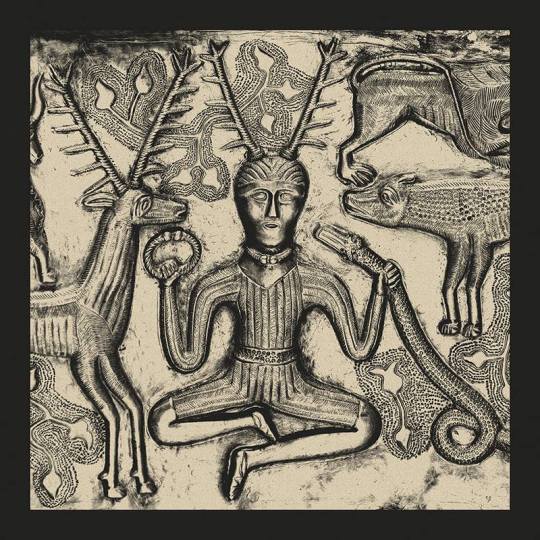
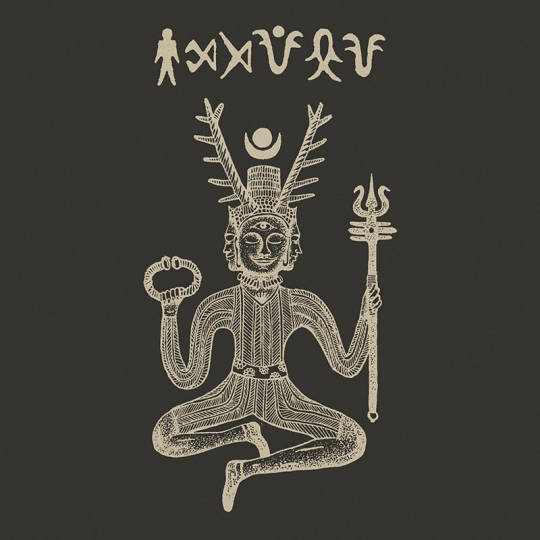
PASHUPATI (Master of Animals) Found in Mohenjo-daro (2500 BCE) from the Harappan culture (8,000BCE) (Image 2) CERNUNNOS (Horned God) Found in Denmark, on the Gundestrup cauldron (200BC - Originating in Greece) (Image 3) 🐍 Its well noted that the names of rivers like the Don, Dneiper, Dneister, Donets and Danube to the north of the Black Sea are largely cognate with the Sanskrit, Danu. Many ancient European peoples, particularly the Celts, regarded themselves as children of Danu, with Danu meaning Mother Goddess, who was also, like Sarasvati in the Rig Veda, a river Goddess. The Celts called themselves “Tuatha De Danaan” as did the mythical pagan rulers of Ireland around 2000BC. The word Danu could reflect such a movement of peoples from West or Central Asia, including migrants originally from regions of greater India and Iran. At the end of the Ice Age, as Europe became warmer, it became a suitable land for agriculture. Ancient European river names like the Danube and various rivers called Don in Russia, Scotland, North England and France reflect this. Danu is probably, in some respects, a synonym of Maya, from the sons of Diti, a wife of Kashyapa, who is sometimes equated with Danu and also known as Sumaya, having a divine (Su) power (Maya). Like the root Ma, the root Da means “to divide” or “to measure”. Maya is the power of the Danavas but also their illusion. Maya itself is the serpent power. With Rudra (Shiva) as their father and Prishni (Shakti) as their mother, they reflect all the Gods of later Hinduism. Perhaps these Sudanavas (Danu) guided many peoples including the Celts and other Europeans. It could also be argued that the Sudanavas were the Maruts, Druids and other Rishi classes who carried the ancient knowledge of magic from northern India, across to Europe via the middle east in a wave of tribal migrations. 🌿The legend of Pashupati can be found in reference to Shiva, as his proto-type. In the Skanda Purana it tells how Shiva used to love a great forest called the 'Sleshmantaka Forest’, where he meditated in the form of a deer. 🌿Cernunnos presided over pristine nature and was skilled in bringing wild beasts into peaceful communion. Ventral Is Golden
177 notes
·
View notes
Note
Someone from the Meiker community here, trying to use your Dneiper Gothic game without being insensitive to you and other Ukrainians. I’m not very knowledgeable on folklore from your country - where can I find out more and read some of the stories? If not in English, then can you point me to a translation service that works well for the language? Thanks!
Greetings! And thank you so much for your view, and time, and company, and shared tones of art, and everything else, too!<з
So! The point is - I don't think there is any way to be interested and find someone's culture and ways beautifull could be insensitive in any way. The way how my culture is shared and admired in some ways across the world had deep impact on me and my self-identification, and lots of inner tones, paths, creations and retentions all along, and I don't see the right way to shut this down because of polemics of "inaproppriate" perceptions.
Art is love, and the love is creational, uniting, it's light and simple, something that goes with you along always and everywhere, and there is no correct way to feel love - maybe to express it, but to embrace love is natural and relieving alltogether. Ukrainian culture is to be shared, I feel delight when know that someone amused, find joy in my creations, and it's my personal charge - to express this correctly, but your delights are just made to be just and trusting.
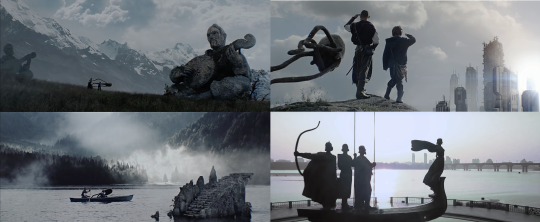
Truth be told - long time ago I made some compilation of literature that I find expressive and personal, all of them - ukrainian authors of prose and poems, and I finded and shared it again for that specific moment of unity. I hope you shall find it in my recent posts - or you can seek at my place by tag "ask" and "ukrainian culture". With translations I cannot say that I can be of real use, and that's saddens me deeply - as there is some educational sites and books to buy, limited and strange for my sight, but I believe that there is a way, through machine translations is terrible in a bad way of word.
But! To find a language that is uniting, simple and expressive on shapes of various and bright is a task that is simple and delightful - as where is beauty and poetism, there is also music, and this is the way that I can share and express<ззз
It was a work both voracious and delightful, and I spend time that I loved deeply - but I made a brief and simple compilation of authors of music, as music is a language that is always international;зз There is no links, but shapeful and simple directions - and some revealed tones and my personal love for each of the points. I hope it can be shared, that this can be inspirational and actual and delightful for some of my beloveds and mutuals and simply everyone that can find their interest there.
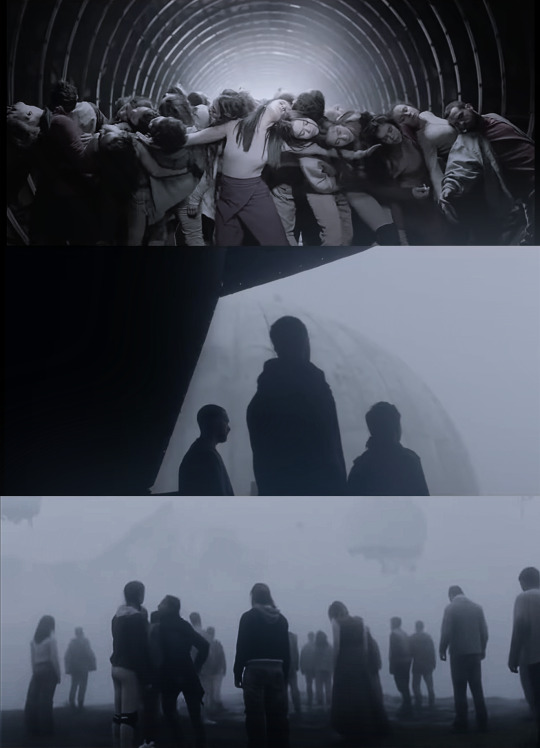


So there I was gone - three columns that are touches different tones of my love and soul, something that I adore and admire deeply, and have desire to share - for a time that is long and fullfilling, too<з
Jamala - 1944
The first tones of shade and mist - a song that, I believe, is knowed and shared, as it was a winner of 2016 year on Eurovision, but this interpretation, and new gloom and sharpness and movement was admired recently - shaped in a new, current way of our year. It's a song of Jamala, named 1944 - year of tatar's deportation from Krimea - a song of young and unshaped happiness, of unshared legacy, of century of the damnations. You shall find it easily, by the lady and the creation's name - official video that was maded five years ago is a tone of dark and gloomy unity, of a soft and unraveled will, of a misty seas and ashen air - tones of our home, our love and rue.
"I did not enjoy my youth I was not able to live in this place" - 1944
Khristyna Soloviy - Pod Oblachkom; Trimay Mene; Hto, yak ne ty?; Gore Dolom; Stezhechka; Holodno
My love and delight, Khrystyna Soloviy, is a western-ukrainian singer with tones that are both ethnical and lyrical in the most beautifull ways. Her tone are light and romantical, melodical, sensual and bird-like, as it goes so well with her delightful name (as Soloviy is a Nightinghale). Some of her songs are of Lemky's dialect and traditional culture - which is an beautifull remind and share of our beloved, gracious Mother, some of them are "Pod Oblachkom" (a folk song of a bewitched young man, his rue and obsession with his bride - accompaned with uncertain and dark, ravishing nature of his heart) and "Gore Dolom", lemky's folk song of lonely, leaved home, and a family that goes far away - the reminder of another tragedy, of a deported kin of western highlanders. One of it's earlier versions was sung together with the next author - Svyatoslav Vakarchuk, who was direct mentor and inspirationalist of Khrystyna, and his song, "Holodno", was also covered by her as an soundrack. "Stezhechka" was also a soundtrack, which is a sung poem of Ivan Franko, author that I pointed in previous compilation. "Hto, yak ne ty?" and "Trimay Mene" are songs of younger, but no less beautifull nature - of a love that is delightful and maddening, that is ravenous as khyzhak and sweet as a dove.
"Is that love was given by god? Was it whispered by a devil himself?" - Pod Oblachkom
"Don't you feel it - my fright, as I am in your palm?.. ..Give to me your torment, give it away with your hands - And heal, heal yourself with my lips" - Trimay Mene
"There is that path - where she walked, The one that took all the joy from my heart.. ..After her steps I posessed ran - Kissed them with my tears, drank from her feet. Alike to a drowned man - that holds his last straw My eyes grasped her sight, for a moment mere" - Stezhechka
Okean Elsy - "Misto Vesny" (together with Odyn v Kanoe); Sonce; Obiymy; Misto Mariyi; Bez Boyu; and lot's, lot's of others as I adore them endlessly>////<
Svyatoslav Vakarchuk, leader of group "Ocean Elzy" was a meaning and inspirationalist for a full generation of nowadays Ukrainian music. His voice, his poetism and visions, the delight and love to create in melodical and bird-like ukrainian had impact over perception of language, of unique music of our country, it's velvet-like, gorgeous expression, and his art itself raised and formed nowadays groups and musicians with their unique nature.
"Bez Boyu" and "Obiymy" was earlier works, more striking, rough but sensual, while "Misto Vesny" was the song that was written in a duet with "Odyn v Kanoe" right before invasion in 2022. It was the song in which they professed their love to their hometown, glorious and ancient city of Lviv, with gorgeous, simple and poetical tones in the video. The stone guardians of the city of Lions, the Cavyarnya's with delicate filizhanka's of coffee (ukrainian noblemans was also one of the earlier promoters of turkish kahve into Europe, and Lviv have personal, unique culture of that delight), the delicate architecture builded on invisible river (as Lviv vas also builded over river named Poltva, fully covering it with it's shape) - all of that is one tone of personal, nowaday's culture of western Ukraine.
After invasion there was "Misto Nadiyi", sacred to city of Mariupol and it's unbending warriors, a hymn of prideful sun. Not so long ago Okean Elsy also sang their old song, "Obiymy", standing at the ruins of Palac Prazy, in my dear homeland - Kharkiv.
"Why can't we forget about our downpours? Maybe for a heroes we were too delicate The walls and lions won't allow us to Scatter the ashes in which those dreams are still burn Those dreams in which I am once again Walking with you, at our dear Lviv, There is a smell of a spring, of the sun that is burning down Of the water, too, from river that has long been gone" - Misto Vesny
"Who are you? As you took my life and didn't return Who are you? You drank my blood and fall asleep inebriate Your eyes are calling, desiring me, they lead me to yourself, Who are you? And whoever you are - I shall not give up without a fight" - Bez Boyu
"None of warships gunpower Can ever destroy my dream As my heart shall never give away my faith And shall stand for the end of the days Glorious city of Mary As long as over prideful Azov sun shall rize" - Misto Mariyi

There is another place that I'd endlessly reccomend for everyone that has desire to hear ukrainian music and see the most melodical creators of our people - the ukrainian "Golos" (Voice), that beside creation of artistic and poetical nature was also platform of recreation of national craft over the years. It has a very delicate and loving touch to the ukrainian language and folk details, of high and proudful image of nowadays creators - most of the most beautiful and astonishing singers, like Khrystyna Soloviy or Odyn v Kanoe, came out of that project.
The most personal and beautifull for me are duet and trio of Alexander Klimenko - "Tvoi Grihy" and "Dumy moyi, dumy moyi" - the first was work of Tina Karol, judge of the show and current ambassador of Ukraine, interpreted and sung together with her, the second - poem of Taras Shevchenko.
The true folk elements can be found, for example, in "Zasvit Vstaly Kozachenky", old traditional warrior's song that was sung by Cossack Siromaha, and, of course, "Plyne Kacha" sung by Inna Ishenko.
Oh - and my personal favorite that I listened without ends currently, "Ptashechka" by Vivienne Mort, which doesn't really touches any of this columns but, just gorgeous o////o
"The wind, that goes by your hand Is a sin, that you did not yet forgive So turn to me, as I embrace pain Of your eyes, so deeply lonely, of your lone depth eyes.
Now I am embraced, dissolved by your eyes You - are my madness, my love and delight at the same time." - Tvoi Grihy
"Oh, don't scowl over me, mother of mine Don't scowl when there happens a woeful time As I am mysef never knew how I shall die..
..How can I not be miserable? How can I not be? You, my son, once was beared under my heart, You laid over it" - Plyne Kacha
"No one heard my song. Nobody heard. My soul was full - of love, unknown for you And it was soul, not me, that was revealed. And only sky had heard the song, my One. I never had that ache before - it hadn't sing that way, for no one else. My One… I am by myself all day Asked for will all day, for freedom from you, or freedom of being yours
And you can't know how much I love you. You go to your bed and I will stay in mine, breathless until morning comes, Until that morning and until that dawn I am myself, Without you I am all by myself, myself, myself, myselfmyselfmyself Myself I am a moonless star" - Ptashechka
34 notes
·
View notes
Text
Russo-Ukraine War 72 hour sitrep/update
Google docs
Sitrep, Maneuver/LOC:
Ukranians are not only holding in the north but have actively flanked the Russian thrust from Belarus towards Kiev and now credibly threaten Russian LOC back to their base of supply in Belarus.
Thrust from the north-east continues to progress but only against heavy resistance and while this thrust has a highway back to Russia, resistance in Sumy is still confirmed to be active, which threatens it. Furthermore, Konotop continues to be held by Ukranians, and a crucial rail junction runs through there.
The aforementioned convoy the Ukranians claimed to have trashed as it tried to skirt Chernihiv is confirmed, and not only that, an entire damned train carrying 52 Russian tanks tried to thunder-run the town and was destroyed for its trouble. Nothing better underlines how Russian ability to advance is integral to their control of key transport crossroads (and thus, cities) than this does.
I have literally lost count of how many ambushed and destroyed Russian convoys I have seen just today. I don’t know if they’re all from the last 12~24 hours or if some date back to the opening hours. Russian losses are becoming truly significant. This rate of attrition is hard to fathom as sustainable.
Russians have bypassed Maritipol in the south and are moving rapidly through the coastal area because the Ukrainians are lightly defending it; most likely ceding this ground to use the Dneiper River as their Main Line of Resistance. There appears to be staunch Ukranian resistance at a city north-northeast of Martipol called Tokmak, because it controls a crucial crossroads. Whether or not this smaller town, surrounded by ideal tank country and fairly close to Russian LOC can long last is questionable, but controlling it will significantly slow any Russian attempts to move past it as their supply lines struggle along side roads and cross-country. This should buy the Ukrainians time to destroy bridges, roads, rail etc. behind them and reinforce whatever new line they have chosen, anchored with the Eastern Donetsk front blocking forces as their eastern flank and the Dneiper river as their western one. More detailed analysis on this to come ASAP.
Russians continue to bite the barricades of Kiev and that’s working out about as well as you’d expect.
Sitrep, Logistical/Intelligence:
Russian logistics appear to be a complete clusterfuck. I have literally lost track of how many different videos I’ve seen of fuel-exhausted Russian vehicles so far. I wanted to detail this yesterday but ran out of time: the many people saying Russia must be “holding back” because ½ its troops aren’t deployed in-country yet don’t understand that road and rail can only move a finite amount of materiel a finite distance in a finite time; and with troops already in contact the Russians will have to choose either between sending in more reinforcements or more supplies for the troops already there. That vehicles are now running out of fuel seems to indicate that Russia chose the latter; gambling that, while Ukraine may have been unexpectedly resilient at first, one more good, violently hard push would crack the shell and end things quickly. This gamble failed last night when Ukraine not only held, but pushed back in crucial areas (such as the Kherson bridgehead,) and now they’re paying the price for that gamble.
Due to the troops > fuel choice my gut instinct is that the units that were first in contact came in with their own “organic” supply – carrying supplies on their own combat vehicles (in bustle racks on tanks/IFVs and in the form of their own modest contingent of dedicated supply transports) and my friends have told me that OSINT evidence bears this out; knocked-out Russian tanks surrounded by an impressive amount of MRE packs and ammo spam cans strewn about when they brewed up. Given that we are readily approaching the 72 hour mark, this means the Russian troops first in contact are likely hours de combat simply from supply exhaustion, (as the increasing number of abandoned vehicles indicate,) so Russian attacks can be expected to falter the further they get from their own territory.
The huge number of successfully ambushed Russian columns indicates that if American intelligence/ISTAR support has not been providing tactical level intel from the get-go, it is now. This most likely means RQ-180 stealth drones, equipped with Ground Moving Target Indicator technology, are operating in Ukranian airspace. The intelligence being provided to Ukraine can now be assumed to extend to tactical target localization and cuing up to and including counter-battery targeting.
Elon goddamned Musk has moved Starlink satellite terminals to Ukraine; providing them with an infrastructure-independent communications option. Combined with their own homegrown cyber capacity and extremely probable US support, this opens up a whole new option for communications, with security being provided by end-to-end encrypted third party software. This is a massive boon to the robustness of Ukrainian C4 capability and should not be under-estimated.
Western aid continues to pour in over the Polish border and donated weapons and equipment are adding up very fast. I count 600+ more stinger missiles and a staggering 1200 Panzerfaust-3 anti-tank rockets as promised to Ukrainian forces. OSINT has already spotted RPGs with Bulgarian factory markings on them on the front lines, indicating how OSINT is only capturing a small fraction of the real aid pouring into the country.
Mention has been made by some of deliberate and skilled Ukrainian propaganda operations being conducted. Although the people alleging this are known to me for a history of hostility towards Ukraine and sympathy for Russian propaganda claims, there’s reason to believe their analysis has some merit, esp. combined with other indicators like strict Ukrainian OPSEC (which may be benefiting from US cyber support, as well.) Given that both morale and international opinion has already been proven to be crucial in just the first 72 hours, this aspect of Ukrainian operational skill sets should not be dismissed; especially as they are currently dominating Russia in that regard.
For various reasons, Ukrainian supply lines from the Polish border to central-central Eastern Ukraine should be considered fairly secure and not at serious risk of deep interdiction by Russian strike assets; as indicated by apparent Russian refusal to attempt such ops, curiously limited deep attacks against infrastructure with aviation strike assets and the persistent credible threat of Ukrainian air defense (see following.)
Sitrep: Strategic + OOB/Materiel
Ukraine is now proven to have substantial surviving surface-to-air missile and aviation assets, both of which the Russians have failed to conclusively put out of action or even seriously attrit. Big update on this to come later. For now, the consequences of this are:
Russia does not have air superiority and cannot operate without, risk even above the MANPAD envelope, in most of the country. A persistent short-medium range SAM threat from tactical maneuver (SA-8, SA-9, SA-13, SA-15s) and short/medium-range high mobility SAMs (SA-6, SA-11) is demonstrated to exist and may be assumed to be higher the further west, and the closer to the center of the country (distant from both Belarus and the coast) Russian assets go due to terrain concealment and increasing distance from Russian airborne and ground based standoff jamming support. The refusal (or inability) of Russia to commit serious, sustained attacks on Ukrainian airbases (preferring instead to attempt repeated small cruise missile attacks likely aimed at taking out assets on the ground) make Ukrainian claims of surviving and still operable S-300 systems more credible than I first believed. These will likely be held back in the Western part of the country, esp. further west than the Black Sea Coast, as that means Moldova + Romanian airspace (closed to Russia and of course the Russian fleet) channels enemy approach lanes and effectively increases strategic depth. The ever-rougher terrain – plus the obvious reluctance of Russian forces to conduct offensive operations too close to the Polish border – also increase survivability of these theater assets in this area, and allow them, in turn, to utilize the strategic depth and terrain features to make Western Ukranian airspace a hostile environment for Russia. Given their evident failures to properly provide CAP and/or SEAD protection to tactical air operations in eastern Ukraine, the ability of the Russian air forces to brave the persistent air threats further west are highly questionable.
My previous assessment of Ukranian tactical/maneuver SHORAD systems is likely erroneous given the demonstrated existence of them in OSINT footage and the demonstrated presenceof surviving batteries by the surprisingly high volume of demonstrated intercepts taking place above (or what should be above) the MANPAD envelope. The answer to “how much of Ukraine’s legacy small road-mobile SAM force was actually refurbished to operational status before hostilities commenced” is now, at least, guaranteed to be “more than just the half-dozen Tor systems that were known.”
Prevalence of Ukranian air assets is murky. Both fixed and rotary wing operations, and both anti-air and anti-ground sorties are being generated, but how many and to what effect is hard to say. There is firm reason to believe (up to and including US DoD confirmation) that Ukraine has, between last night and this, downed four IL-76 transports. There are also claims that the Vasylkiv interceptor airbase, the same one targeted by the all-out effort paradrop last night, is actually still active as a MiG-29 base, and that a MiG from said base actually shot down one of the incoming IL-76s. I found this hard to believe given the high likelihood of that base being reduced by the initial Russian missile blitz and the obvious wisdom of dispersing assets and ops personnel from more exposed bases to more distant, protected ones further in the rear, but not minutes ago a missile attack was conducted on the base that resulted in a truly huge explosion and OSINT images seem to indicate it was, indeed, an attack on the base’s underground fuel bunkers. That 1. this had not already been conducted in the opening blitz and 2. the Russians decided to do it now makes it more likely that Ukrainian claims of successful A2A engagements are actually true. It should always be borne in mind that there is great propaganda and deceptive strategic value in claiming surface-to-air kills as actually air-to-air kills, esp. if the enemy is actually fooled (which might be the case here,) but taken all together with other staggering displays of Russian operational incompetence taken into account it is clear that nothing is impossible at this point.
More detailed AD explanation to follow.
44 notes
·
View notes
Text
Russian Fairy Tales Test Prep: Pagan Deities
The best known roster of pagan deities is that of the six whose statues Prince Vladimir erected upon assuming sole rule of Kiev. According to the Primary Chronicle for the year 980, he “placed idols on a hill, outside the palace yard, a wooden Perun with a silver head and a golden mustache, and Khors and Dazhbog and Stribog and Simargl and Mokosh.” Missing from this list is Volos/Veles, the god of cattle (skotnii bog) and commerce, whose veneration in ancient Rus’ is widely attested, and by whose name (along with that of Perun) ancient Russians ratified oaths.
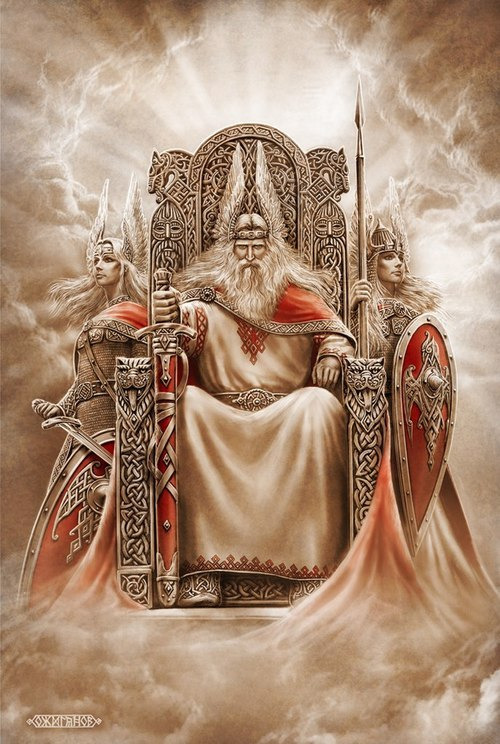
A. Perun/Bog
1. equivalent to: Lithuanian Perkunas, Latvian Perkons, Albanian Perendi, Roman Jupiter, Greek Zeus, Hittite Teshub, Norse Thor/Donar, Celtic Taranis. 2. primary sources: Nestor’s Chronicle, mid-6th century Procopius, 10th-century Varangian treaties 3. primary story: a creation myth, in which he battles Veles, the Slavic god of the underworld, for the protection of his wife (Mokosh, goddess of summer) and the freedom of atmospheric water, as well as for the control of the universe. 4. dvoeverie: After Christianization in the 11th century CE, Perun's cult became associated with St. Elias (Elijah), also known as the Holy Prophet Ilie (or Ilija Muromets or Ilja Gromovik), who is said to have ridden madly with a chariot of fire across the sky, and punished his enemies with lightning bolts.
In Slavic mythology: Perun was the supreme god of the pre-Christian Slavic pantheon, although there is evidence that he supplanted Svarog (the god of the sun) as the leader at some point in history. Perun was a pagan warrior of heaven and patron protector of warriors. As the liberator of atmospheric water (through his creation tale battle with the dragon Veles), he was worshipped as a god of agriculture, and bulls and a few humans were sacrificed to him. In 988, the leader of the Kievan Rus' Vladimir I pulled down Perun's statue near Kyiv (Ukraine) and it was cast into the waters of the Dneiper River. As recently as 1950, people would cast gold coins in the Dneiper to honor Perun.
Appearance & Reputation: Perun is portrayed as a vigorous, red-bearded man with an imposing stature, with silver hair and a golden mustache. He carries a hammer, a war ax, and/or a bow with which he shoots bolts of lightning. He is associated with oxen and represented by a sacred tree—a mighty oak. He is sometimes illustrated as riding through the sky in a chariot drawn by a goat. In illustrations of his primary myth, he is sometimes pictured as an eagle sitting in the top branches of the tree, with his enemy and battle rival Veles the dragon curled around its roots.
Perun is associated with Thursday—the Slavic word for Thursday "Perendan" means "Perun's Day"—and his festival date was June 21.
Reports: The earliest reference to Perun is in the works of the Byzantine scholar Procopius (500–565 CE), who noted that the Slavs worshipped the "Maker of Lightning" as the lord over everything and the god to whom cattle and other victims were sacrificed.
Perun appears in several surviving Varangian (Rus) treaties beginning in 907 CE. In 945, a treaty between the Rus' leader Prince Igor (consort of Princess Olga) and the Byzantine emperor Constantine VII included a reference to Igor's men (the unbaptized ones) laying down their weapons, shields, and gold ornaments and taking an oath at a statue of Perun—the baptized ones worshipped at the nearby church of St. Elias. The Chronicle of Novgorod (compiled 1016–1471) reports that when the Perun shrine in that city was attacked, there was a serious uprising of the people, all suggesting that the myth had some long-term substance.
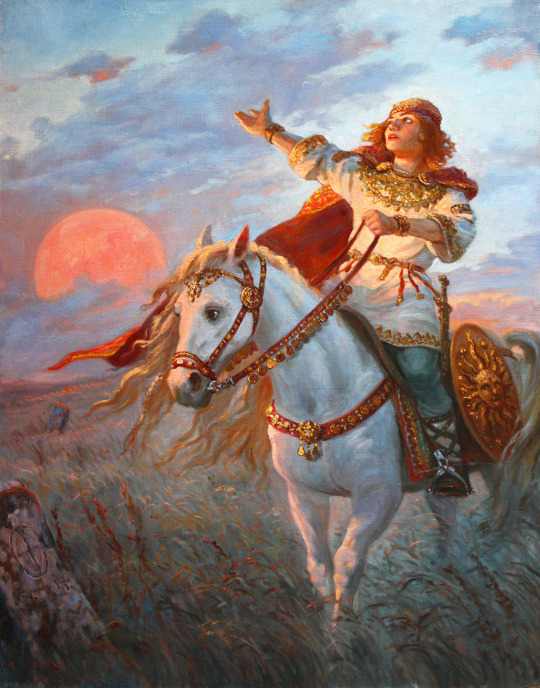
B. Kors/Xors/Chors
- most frequently mentioned Slavic god, after Perun - dvoeverie: appears in the apocryphal work Sermon and Apocalypse of the Holy Apostles, which mentions Perun and Khors as old men; Khors is said to live in Cyprus. Khors also appears in the apocryphal text Conversation of the Three Saints, a text which combines Slavic + Christian + Bogomil traditions. In it, he is referred to as “an angel of thunder” and it is said that he is Jewish. - his functions are uncertain and there are multiple interpretations of his name.
1. Sun God hypothesis: associated with Dazhbog; in The Tale of Igor’s Campaign, Prince Vseslav, who “came to Tmutarakani before the cocks" and "Khors ran his way", traveled from west to east and thus reached the castle before the cocks crowed, and in this way "overtook" the Sun; his name means “rays.”
2. Moon God hypothesis: Prince Vseslav was called “wolf” and his journey takes place at night when the sun is absent from the sky; his name does mean “rays” but they’re the moon’s rays and not the sun’s rays.
3. Fertility God/Vegetation hypothesis: link between Thracian & early Slavic cultures indicates Kors is more of a Dionysus-type figure, who dies and is risen; like Dionysus, Dazhbog (who Kors is often linked to) has a double nature (Eastern Slavs assign him solar qualities, while Southern Slavs assign him chthonic qualities).
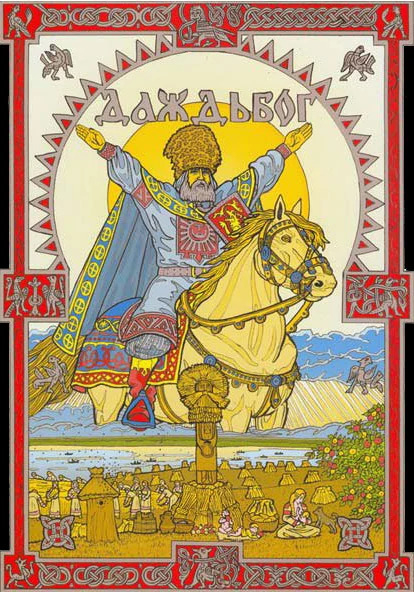
C. Dazhbog
1. equivalent to: Khors (Russian/Iranian), Mithra (Persian), Helios (Greek), Lucifer (Christian) 2. primary sources: John Malalas, The Song of Igor’s Campaign 3. family: Son of Svarog, brother of fire god Svarozhich, husband of Mesyats (the moon), father of the Zoryi and Zvezdy 4. primary myth: He resided in the east, in a land of everlasting summer and plenty, in a palace made of gold. The morning and evening auroras, known collectively as Zorya, were his daughters. In the morning, Zorya opened the palace gates to allow Dazbog to leave the palace and begin his daily journey across the sky; in the evening, Zorya closed the gates after the sun returned in the evening. 5. dvoeverie: There was a belief that each winter he would enter people's homes and gift gold to those who had been good. That belief passed into Christianity, especially in Serbia, and this visitor was called Položajnik. During Christianisation, his cult was exchanged with the cult of Saint Sava, while Dažbog became lame Daba - the most powerful demon in Hell. Reasons why he was demonized are various, possibly because his cult was the strongest in Serbia or because he was considered also as the god of Nav, the Slavic underworld and world of the dead.
In Slavic mythology: Dazbog was the Slavic sun god, a role that is common to many Indo-European people, and there is ample evidence that there was a sun cult in the pre-Christian tribes of central Europe. His name means "day god" or "giving god," to different scholars—"Bog" is generally accepted to mean "god," but Daz means either "day" or "giving."
His totem animal was a wolf, therefore wolves were sacred animals and killing them was considered a great sin. Wolves were considered to be messengers of Dazhbog, while he himself could shift into a white wolf.
According to one myth, Svarog became tired of reigning over the universe and passed on his power to his sons, Dazhbog and Svarogich.
Appearance & Reputation: Dazbog is said to ride across the sky in a golden chariot drawn by fire-breathing horses who are white, gold, silver, or diamonds. In some tales, the horses are beautiful and white with golden wings, and sunlight comes from the solar fire shield Dazbog always carries with him. At night, Dazbog wanders the sky from east to west, crossing the great ocean with a boat pulled by geese, wild ducks, and swans.
In some tales, Dazbog starts out in the morning as a young, strong man but by the evening he is a red-faced, bloated elderly gentleman; he is reborn every morning. He represents fertility, male power, and in "The Song of Igor's Campaign" he is mentioned as the grandfather of the Slavs.

4. Stribog
Very little is known about him, although he was clearly very important to early Slavic peoples. In the epic ”Slovo o polku Igorove “ it is said that the winds, the grandsons of Stribog, blow from the sea. This leads to conclusion that Stribog is imagined as an old person, since he has grandsons. The grandsons were the winds from all directions.
Eagle was the animal consecrated to Stribog. Plants consecrated to Stribog were hawthorn and oak. When pledges were made, Stribog was often warrantor. Festivities in Stribog’s honor were organized in the summer as well as in the winter. They were probably organized in the summer in order to invocate winds and rain, while in the winter they were organized in order to appease him. In the period of Christianization Stribog’s characteristics were overtaken by St. Bartholomew and Stevan vetroviti (windy).

5. Simargl/Semargl
- may be equivalent to Simurgh in Persian mythology, who is portrayed similarly (winged lion and/or dog). He can also take human form. - God of physical fire (as opposed to celestial fire; that’s Svarog) - He is said to be the husband of Kupalnica (or Kupalnitsa), goddess of night, from whom he got two children: Kupalo and Kostroma.
Zorya, solar goddesses who are servants or daughters of the deity Dazhbog, keep Simargl chained to the star Polaris in the constellation Ursa Minor. Should he break free and destroy this constellation, it will cause the world to end.
Why would he be worshipped in Rus’, you ask? A couple of possible answers: a. Eastern Slavs borrowed Simargl from Sarmatian-Alanian people and worshiped him. b. Eastern Slavs never worshiped Simargl. Just at that time, a significant number of Kiev residents were of Khazar and Sarmatian-Alanian origin. Vladimir included their deity in the pantheon to get their support.

6. Volos/Veles (also Vlas, Weles Vlasii, St. Blaise, or Blasius)
1. equivalent to: Velinas (Baltic), Varuna (Vedic), Hermes (Greek), Odin (Norse) 2. primary sources: The Tale of Igor’s Campaign, old Russian chronicles 3. primary myth: a creation myth, in which Veles abducts Mokosh (the Goddess of Summer and consort of Perun, God of Thunder). Perun and his enemy battle for the universe under a huge oak, Perun's holy tree, similar to both Greek and Norse (Yggdrasil) mythologies. The battle is won by Perun, and afterward, the waters of the world are set free and flowing. 4. dvoeverie: Velia remains a feast of the dead in old Lithuanian, celebrating the border between the world of the living and the world of the dead, with Veles operating as a role of guiding souls to the underworld. The battle between Perun (Ilija Muromets or St. Elias) and Veles (Selevkiy) is found in many different forms, but in later stories, instead of gods, they are complementary figures separated from one another by a furrow plowed by Christ, who converts them. Veles is also likely represented by St. Vlasii, depicted in Russian iconography as surrounded by sheep, cows, and goats.
In Slavic mythology: A second creation myth associated with Veles is the formation of the boundary between the underworld and the human world, a result of a treaty forged between Veles and a shepherd/magician.
In the treaty, the unnamed shepherd pledges to sacrifice his best cow to Veles and keep many prohibitions. Then he divides the human world from the wild underworld led by Veles, which is either a furrow plowed by Veles himself or a groove across the road carved by the shepherd with a knife which the evil powers cannot cross.
Veles is associated with a wide variety of powers and protectors: he is associated with poetry and wisdom, the lord of the waters (oceans, seas, ships, and whirlpools). He is both the hunter and protector of cattle and the lord of the underworld, a reflection of the Indo-European concept of the netherworld as a pasture. He is also related to an ancient Slavic cult of the deceased soul; the ancient Lithuanian term "welis" means "dead" and "welci" means "dead souls."
Appearance & Reputation: Veles is generally portrayed as a bald human man, sometimes with bull horns on his head. In the epic creation battle between Velos and Perun, however, Veles is a serpent or dragon lying in a nest of black wool or on a black fleece beneath the World Tree; some scholars have suggested he was a shape-shifter. In addition to domestic horses, cows, goats, and sheep, Veles is associated with wolves, reptiles, and black birds (ravens and crows).
Reports: The earliest reference to Veles is in the Rus-Byzantine Treaty of 971, in which the signers must swear by Veles' name. Violators of the treaty are warned of a menacing punishment: they will be killed by their own weapons and become "yellow as gold," which some scholars have interpreted as "cursed with a disease." If so, that would imply a connection to the Vedic god Varuna, also a cattle god who could send diseases to punish miscreants.

7. Mokosh
1. loosely comparable to: Gaia, Hera (Greek), Juno (Roman), Astarte (Semitic) 2. epithets: Goddess Who Spins Wool, Mother Moist Earth, Flax Woman 3. primary sources: Nestor Chronicle (a.k.a. Primary Chronicle), Christian-recorded Slavic tales 4. dvoeverie: With the coming of Christianity into the Slavic countries in the 11th century CE, Mokosh was converted to a saint, St. Paraskeva Pyanitsa (or possibly the Virgin Mary), who is sometimes defined as the personification of the day of Christ's crucifixion, and others a Christian martyr. Described as tall and thin with loose hair, St. Paraskeva Pyanitsa is known as "l'nianisa" (flax woman), connecting her to spinning. She is the patroness of merchants and traders and marriage, and she defends her followers from a range of diseases.
In Slavic mythology: The origins of Mokosh as mother earth may date to pre-Indo-European times (Cuceteni or Tripolye culture, 6th–5th millennia BCE) when a near-global woman-centered religion is thought to have been in place. Some scholars suggest she may be a version of Finno-Ugric sun goddess Jumala.
Mokosh, sometimes transliterated as Mokoš and meaning "Friday," is Moist Mother Earth and thus the most important (or sometimes only) goddess in the religion. As a creator, she is said to have been discovered sleeping in a cave by a flowering spring by the spring god Jarilo, with whom she created the fruits of the earth. She is also the protector of spinning, tending sheep, and wool, patron of merchants and fishermen, who protects cattle from plague and people from drought, disease, drowning, and unclean spirits.
Although the Great Goddess has a variety of consorts, both human and animal, in her role as a primary Slavic goddess, Mokosh is the moist earth goddess and is set against (and married to) Perun as the dry sky god. Some Slavic peasants felt it was wrong to spit on the earth or beat it. During the Spring, practitioners considered the earth pregnant: before March 25 ("Lady Day"), they would neither construct a building or a fence, drive a stake into the ground or sow seed. When peasant women gathered herbs they first lay prone and prayed to Mother Earth to bless any medicinal herbs.
Appearance & Reputation: Surviving images of Mokosh are rare—although there were stone monuments to her beginning at least as long ago as the 7th century. A wooden cult figure in a wooded area in the Czech Republic is said to be a figure of her. Historical references say she had a large head and long arms, a reference to her connection with spiders and spinning. Symbols associated with her include spindles and cloth, the rhombus (a nearly global reference to women's genitals for at least 20,000 years), and the Sacred Tree or Pillar.There are many goddesses in the various Indo-European pantheons who reference spiders and spinning. Historian Mary Kilbourne Matossian has pointed out that the Latin word for tissue "textere" means "to weave," and in several derivative languages such as Old French, "tissue" means "something woven." The act of spinning, suggests Matossian, is to create body tissue. The umbilical cord is the thread of life, transmitting moisture from the mother to the infant, twisted and coiled like the thread around a spindle. The final cloth of life is represented by the shroud or "winding sheet," wrapped around a corpse in a spiral, as thread loops around a spindle.

Our brief survey of agrarian holidays indicates that the peasant’s central concern is fertility and that special rites in the cemetery and/or rites involving a symbolic death & resurrection are a major component in these celebrations.
Belief in the absolute sanctity of “Mother Damp Earth” (Mat’syra zemlia) has been central to folk belief throughout the centuries. In remote areas, old people observed a ritual of asking the earth’s forgiveness prior to death into the 20th century. A number of scholars have maintained that peasants transferred attributes of earth worship to their particular veneration of Mary as “Mother of God.”
Fedotov: “At every step in studying Russian popular religion, one meets the constant longing for a great divine female power, be it embodied in the image of Mary or someone else. Is it too daring to hypothesize, on the basis of this religious propensity, the scattered elements of the cult of a Great Goddess who once...reigned upon the immense Russian plains?”
#Russian fairy tales#study blog#my notes#Slavic deities#slavic mythology#Russian paganism#russian folk belief
124 notes
·
View notes
Text

L'equinozio di primavera segna la svolta nella battaglia per la liberazione della terra.
Di Benjamin Fulford
Ci sono numerosi rapporti provenienti da tutte le direzioni che indicano che la guerra per il controllo del pianeta Terra, che infuria letteralmente da migliaia di anni, sta volgendo al termine.
La battaglia per l'Ucraina sarà vista dagli storici futuri come l'ultima resistenza della mafia satanica Khazariana che ha complottato per trasformare l'intero pianeta in una gigantesca fattoria di animali governata da loro.
Una volta che l'umanità sarà liberata, inizierà una massiccia campagna per rendere reale l'immortalità su questa terra, promettono fonti di White Hat.
Anche la quarantena sul pianeta Terra sarà conclusa e la vita terrestre potrà colonizzare l'universo.
Questo farà sembrare l'esplosione del Cambriano (quando improvvisamente è emersa la vita multicellulare) come un petardo, in confronto, dicono.
Il lato oscuro sta cercando di fermarlo uccidendo il 90% dell'umanità e distruggendo gran parte del mondo naturale.
In altre parole stanno pianificando un ecocidio oltre che un genocidio.
Un esempio è la spinta a convertire la flotta automobilistica mondiale nei cosiddetti motori elettrici “ecologici”.
Per fare ciò, devi scavare 500.000 libbre di crosta terrestre per UNA batteria.
Al contrario, potremmo utilizzare i pannelli solari domestici per convertire l'acqua in idrogeno, alimentando le auto che lasciano il vapore acqueo come residuo.
Questo ovviamente priverebbe la mafia Khazariana di un controllo centralizzato sull'energia e quindi sull'economia mondiale.
Stanno cercando di ucciderci tutti prima che riusciamo a capire cose del genere, da qui la guerra in corso.
Ad ogni modo, guardiamo ora allo stato attuale della battaglia per liberare l'umanità.
Qui, la mossa più grande della scorsa settimana è stata una proposta di pace anglo-tedesca presentata alla Russia la scorsa settimana, secondo l'MI6 e fonti dell'intelligence tedesca.
La proposta prevede un ritorno ai confini della Germania precedenti al 1914.
Propone inoltre di utilizzare il fiume Dneiper come confine de facto tra l'Europa orientale e quella occidentale.
Questa è stata la risposta dell'FSB russo a questa proposta:
“[Il presidente russo Vladimir] Putin intende dividere l'UE in due parti, unire le nazioni slave e porre fine alla NATO.
È stato utilizzato dagli Stati Uniti come forza d'attacco e non di mantenimento della pace.
5 notes
·
View notes
